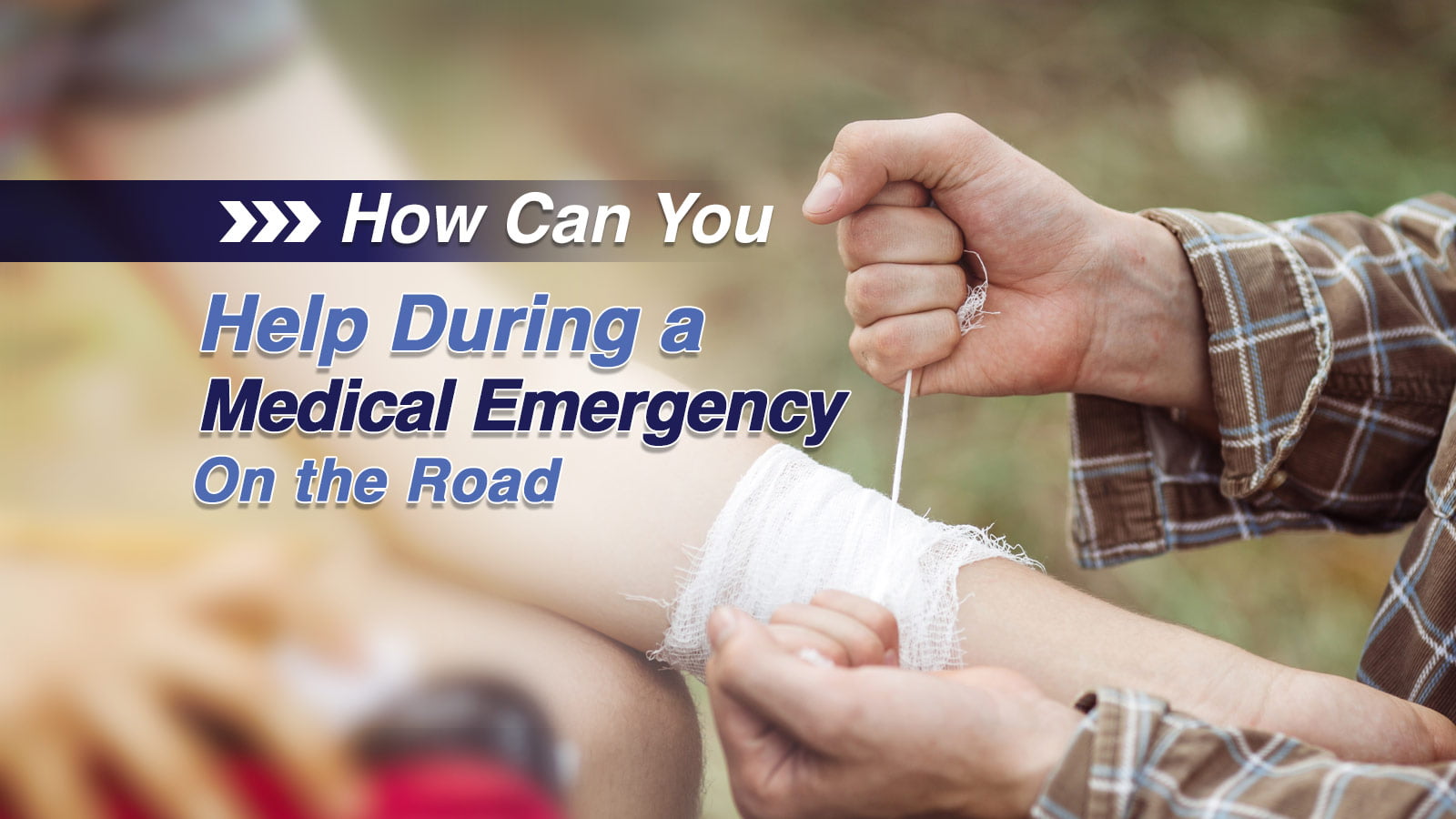Have you heard about Highway Angels? Drivers who have done courageous acts while on the road are recognized through the Highway Angel program, and stories about them continue to motivate us.
As inspiring as they are, these stories also remind us that all sorts of emergencies can occur on the roadways, so we gathered some information that may be useful in such cases, whether you’re the one experiencing a medical emergency or you noticed a fellow driver in need of help.
If you find yourself arriving on the scene of an accident first, start by checking if anyone is injured. If you hear shouts or cries from the direction of colliding vehicles, check if you can help in any way. You should also ensure that incoming traffic is alerted by putting out cones and reflective equipment, like a triangle. After making sure that the accident participants are conscious, continue talking to them and reassuring them. If the person is completely quiet and unresponsive, it may be a sign of a more serious injury or a sign that their airflow is blocked. Make sure to dial 911 or any other emergency service ASAP and ask them for advice. Try not to move the seemingly injured person out of the vehicle unless it is on fire, flooded, or may explode. Even then, support the person’s neck, head, and spine as much as possible. If you find yourself on the scene of a motorcycle accident, do not remove the motorist’s helmet! If you need to check to see if they are breathing, try doing so by lifting the visor only, as lifting the helmet may cause further neck and spine injuries, if they have them already.
Use DRABCs:
D – Danger– make sure you are not in danger, either by passing traffic or by fire/explosion hazards.
R – Response – try to get a response from an injured person by using shout-tap-shout.
A – Airway – if their airway seems blocked, lift their chin forward by placing your fingers underneath it.
B – Breathing – make sure they are breathing! Ways to check this are to pay attention to their chest moving or to feel air coming out of their nose or mouth by placing your hand or cheek next to it.
C – Circulation – look for any wounds and signs of bleeding. If they are bleeding, make sure not to remove any objects that caused the wound they are bleeding from. While avoiding pressure directly on the object, apply a bandage or any other clean cloth around the wound as firmly as possible to stem the blood flow. Keep the person warm.
CPR should only be done if necessary until the emergency services arrive. After you have dialed the emergency service, ask them for advice on whether or not you should perform it. Usually, they will advise you to check if the person is breathing. If they aren’t breathing, CPR will most likely be required. It should only be done on a flat and firm surface, so if the person who needs it is stuck inside a vehicle, you will need to carefully carry them out, while supporting their neck and head. You may want to consider getting CPR training since doing it improperly may cause more harm than good. Until then, you can find a detailed description of how to do CPR properly on an adult on the Red Cross website.
Another widespread medical emergency among truckers is a heart attack. The first signs of it can include chest pain or pressure and discomfort in the chest area, nausea, heartburn, blurred vision, dizziness, discomfort and numbness in the arm, shoulder, neck, or back, shortness of breath, and sweating. If you notice any of these symptoms while driving, pull over and turn off your truck, dial an emergency service, and get their advice. Sometimes, they will recommend you take aspirin while waiting for the ambulance to arrive since it prevents blood clots and may reduce heart damage when taken during a heart attack. Make sure you’re not allergic to aspirin before taking it! If someone else is having a heart attack, do the same steps and only consider CPR if the person is unconscious.
AED defibrillators can also be very useful in such situations, and they should be a part of your first aid kit, along with tourniquets, clean cloths, hemostatic bandages, gloves, gauze, thermal fire blankets, medical tape, hydrogel, and disinfectant wipes.
If you encounter someone with an intense anxiety attack, breathing exercises or grounding exercises can help them. There are plenty of different breathing techniques that are recommended in these situations, and they mostly focus on breathing out for longer periods than breathing in since this will help slow down the heart rate. Grounding may include focusing on the surroundings, rubbing palms together, and naming things people see, hear, or can smell.
No matter the medical emergency, the most important thing to keep in mind is to try not to panic and dial an emergency service. We encourage you to lend a helping hand to anyone who might need it on American roads and highways.


Leave A Comment